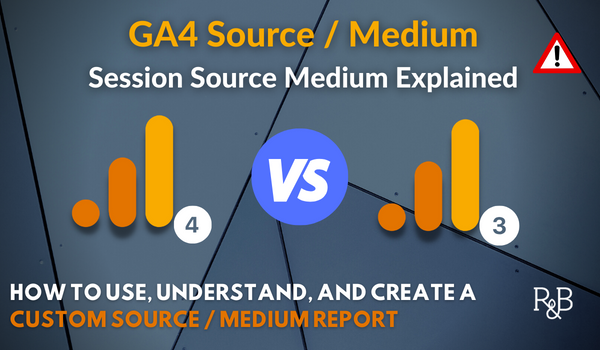Understanding Secondary Dimensions in Google Analytics: Their Importance and Effective Usage
Wiki Article
Revealing the Influence of Additional Measurement in Google Analytics on Information Evaluation and Insights
In the realm of information analytics, the usage of second measurements within Google Analytics has become a pivotal device for removing much deeper understandings and unraveling facility patterns that could otherwise remain covered. By peeling back the layers of primary data collections, secondary dimensions provide a nuanced viewpoint that enriches the understanding of user behavior, web site efficiency, and the efficiency of marketing approaches. Nonetheless, truth impact and untapped possibility of second dimensions are frequently ignored, eclipsed by the allure of key metrics. As we navigate via the elaborate landscape of data analysis, the importance of second measurements becomes significantly apparent, clarifying essential information that hold the secret to notified decision-making and tactical optimizations.Discovering the Concept of Additional Measurements
Additional measurements in Google Analytics give added insights by permitting individuals to analyze main information in conjunction with a second feature. By including second dimensions, users can delve deeper right into the information and uncover important relationships that may or else go unnoticed - what is a secondary dimension in google analytics.Understanding the idea of second measurements is vital for making the most of the potential of Google Analytics. It permits individuals to sector data properly, recognize patterns, and make notified choices based upon a more full photo of their analytics information. By exploring the numerous secondary dimensions readily available in Google Analytics, users can open new insights and maximize their digital advertising efforts. Basically, second measurements work as a powerful tool for improving data evaluation and driving workable outcomes.
Enhancing Data Analysis With Second Measurements
Having developed the foundational understanding of additional measurements in Google Analytics and their pivotal function in data evaluation, the focus currently changes in the direction of leveraging these second credit to enhance the analysis of analytics information (what is a secondary dimension in google analytics). By including additional measurements into information evaluation, experts can obtain deeper insights right into individual behavior, website efficiency, and advertising and marketing effectiveness

Moreover, secondary measurements assist in contextualizing main information metrics by providing added layers of info. This contextualization aids in comprehending the 'why' behind the information trends, assisting analysts make educated decisions and optimizations to enhance overall performance. Inevitably, integrating additional dimensions enriches the data interpretation process, bring about even more calculated activities and significant insights.
Discovering Hidden Insights With Additional Dimensions
Discovering the midsts of analytics information with secondary measurements exposes useful understandings that would or else continue to be covered. By including additional measurements in Google Analytics, organizations can unearth concealed patterns, trends, and connections that give a more thorough understanding of user behavior and site performance. These extra layers of data permit experts to dig much deeper into the key measurements, such as traffic resources or touchdown web pages, and gain an extra nuanced viewpoint on just how different variables communicate with each other.Through making use of second dimensions, analysts can sector and compare data across numerous measurements, allowing them to recognize certain factors that influence individual involvement, conversion prices, and overall success metrics. By pairing the primary dimension of 'tool group' with the second measurement of 'age team,' marketers can identify which age demographics favor accessing the site with mobile devices versus desktops. This level of granularity empowers services to make data-driven choices and maximize their techniques for better results. Ultimately, revealing surprise understandings through second measurements enhances the deepness and precision of data evaluation, causing even more informed decision-making and boosted efficiency outcomes.
Leveraging Secondary Dimensions for Actionable Analytics
Building upon the insights revealed with second measurements in Google Analytics, organizations can currently harness this enriched information landscape to drive actionable analytics and strategic decision-making. By leveraging secondary measurements, organizations can dig deeper into their data to extract beneficial patterns, fads, and correlations that might have previously gone undetected. This deeper degree of evaluation makes it possible for organizations to get a much more detailed understanding of user habits, project performance, and general internet site his comment is here performance.One key advantage of utilizing second measurements for actionable analytics is the capability to sector information based why not try these out on certain requirements. This segmentation allows companies to customize their projects and methods to various audience groups, resulting in much more targeted and reliable advertising efforts - what is a secondary dimension in google analytics. In addition, secondary measurements provide a more all natural sight of individual communications, allowing organizations to optimize their website material, layout, and overall user experience
Making Best Use Of Decision-Making With Additional Measurements
To improve critical decision-making in analytics, leveraging secondary dimensions in Google Analytics can give a much more nuanced perspective on individual actions and campaign efficiency. By incorporating additional measurements into data evaluation, organizations can dig much deeper into the specifics of their website site visitors' interactions and engagement patterns. This extra layer of info permits an extra extensive understanding of just how various variables, such as demographics, tools, or website traffic sources, influence crucial performance indications.
Final Thought
To conclude, using second dimensions in Google Analytics plays a crucial duty in improving information evaluation and discovering concealed understandings. By discovering this idea, one can gain a deeper understanding of individual behavior and make educated decisions based on actionable analytics. Leveraging additional dimensions allows for an extra comprehensive interpretation of information and makes the most of the effectiveness of decision-making processes.
Report this wiki page